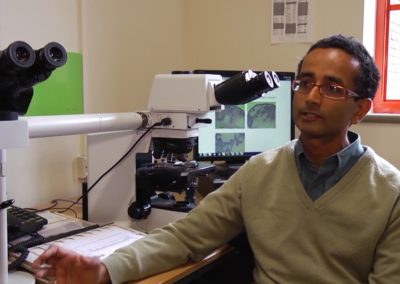Consultant Connect changes the way clinicians interact with colleagues in hospitals and other secondary care services, improves patient care, and reduces unnecessary referrals. In Scotland, three Health Boards are using Consultant Connect for rapid prof-to-prof clinical decisions to support clinical decision-making, reduce unnecessary attendances, and navigate patients to the most appropriate place, the first time.
The conversations between clinicians and specialists, result in between 30% – 60% of patients avoiding an unnecessary hospital appointment.
If you missed our webinar on the topic, the article below summarises the case study shared by the speaker panel from NHS Lanarkshire
- Ramping up prof to prof clinical decisions in 2020, in the context of national redesign work
Dr Gordon McNeish Consultant, Emergency Medicine, University Hospital Hairmyres, NHS Lanarkshire
‘Every Health Board has complexities, ours is fairly unique with three similar-sized hospitals with three Emergency Departments (EDs), each seeing around about 1,200 to 1,300 patients a week (pre-COVID).
We first started to look at prof-to-prof clinical decisions based on a couple of things:
- First of all, we’d had a GP out-of-hours pilot where ED consultants were working in GP out-of-hours and working alongside GPs. They started to tell us about how they didn’t really have alternatives to referrals other than through our existing Emergency Response Centre (ERC) which has been in place in Lanarkshire for about 15 years. The ERC is the in-hours call handling of GP unscheduled care referrals.
- The emergency medical consultants within Monklands, (one of the hospitals in Lanarkshire), told us about the variability in the type of patients being sent in. Sometimes we would have frustration about whether there was an active alternative.
So, in August 2019 we set up a short-life working group where we tried to gather representatives from primary care, and secondary care, across all three sites, to try and put something together in terms of what we could do to look at unscheduled care referrals and Consultant Connect was mentioned as an option. Hearing from experience in Tayside and Greater Glasgow & Clyde certainly set the ball rolling to look at that in a bit more detail.’
- Front door and back door approach
Dr Gordon McNeish
‘Through contact with Consultant Connect and a conversation with Dr Ron Cook and a representative from Greater Glasgow & Clyde, we got the notion of Tayside’s front door approach with their paramedics being at the forefront of calls, and Greater Glasgow & Clyde’s, at the time, back door approach, where the specialty consultants were taking calls similar to what Susan was describing earlier. We were keen to push ahead with both of these approaches.
We were about five months into planning when COVID arrived. The redesign of urgent care and unscheduled care approach which came from the Scottish Government included press for prof-to-prof clinical decisions, and scheduling of unscheduled care. That gave the spur to finish off the business case that we were developing and present it to the board for funding of Consultant Connect.
While we were waiting for an answer on the business case for Consultant Connect, we started trying out a prof to prof clinical decisions link with the Scottish Ambulance Service at Monklands with an initial focus on for patients with potential COVID. As Tayside found, it was a challenge trying to keep track of these conversations. We went through different recording solutions with paper, we put a database together, but each of them failed to really have a reliable capture of the amount of calls we were taking and the outcomes, and similarly any governance towards any non-favourable outcomes about patients ending up with us anyway.
So, when we got an agreement for funding for Consultant Connect, we went two-pronged. We looked at eight specialties in the first instance, to be able to take calls directly from primary care, initially to gauge this advice for patients that you would otherwise have sent via the ERC, to the acute hospitals before, for unscheduled care referrals. This was to see if there were any patients that were on the borderline of requiring acute referral and if a discussion with a specialist would maybe offset that. Then, having ED as one of those options for GPs, but also giving that ED option, and other options, such as medicine for the elderly, to paramedics across Lanarkshire, and then scaling it up right across Lanarkshire, so that all three EDs and the specialists across Lanarkshire.
At the same time, our ERC developed into our Flow Navigation Centre, which was another one of the asks of the redesign of the urgent care programme. We had an existing structure of an ERC, but we needed to scale it up, so we could operate 24/7, as well as taking GP calls, as we did previously, and also have Consultant Connect as an option.’
- Flow centre and Patient Connect approach
Dr Gordon McNeish
‘Patient Connect is part of our flow navigation centre strategy. We were looking to provide some senior decision-maker support to the nursing staff who operated within the flow navigation centre, so we created a rota which covered peak times between 12pm and 8pm, seven days a week. We have around ten ED consultants across the three sites in Lanarkshire who cover these shifts. We have some variability in it but a reasonable pickup rate for these shifts as additional shifts to ED shifts.
They were initially done within the flow centre at Hairmyres, so we were sitting in amongst the staff to be able to see the setup of it all, but more latterly we’ve been able to do that remotely from a laptop, either at home or within the office, so that makes it a bit easier for consultants to sign up to these shifts and provide that support.’
- So, what is the support we’re providing?
Dr Gordon McNeish
‘Different Health Boards are all doing things a bit differently, but with our flow navigation centre, the calls from NHS 24 to ED are getting booked onto the Adastra system and displaying on the Trakcare systems of the individual acute sites across Lanarkshire.
We’re able to see these calls coming through and pretty much phone back the patient immediately using Consultant Connect’s Patient Connect to do that.
With Patient Connect, we use the Consultant Connect App, and are able to dial out to patients. Via Consultant Connect all calls are recorded in the same way that they are when it is a clinician-to-clinician call via the system, outcomes can be recorded by the consultants, enabling us to capture accurate data on what the call outcomes are. Data* shows that with about 30-35% of calls we make we’re able to divert patients away from ED. I think we’re approaching about 4,000 consultant-to-patient calls since we started doing this at the end of December 2020/beginning of January 2021 and we’re hoping that the national messaging campaign from the Scottish Government about calls going via NHS 24 we can hopefully redirect even more patients away from ED.’
*Data correct as of May 2022





